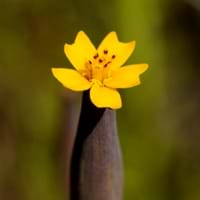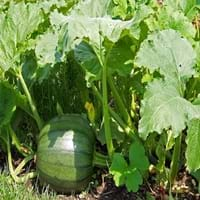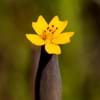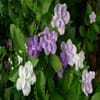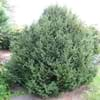Life Span
Annual
Annual or Biennial
Type
Flowering Plants
Vegetable
Origin
Mexico, Central America, South America
South America
Types
Not available
Arikara squash
Arikara squash
Boston marrow
Buttercup squash
Candy Roaster
Number of Varieties
Not Available
Habitat
Cultivated Beds
Clay soil areas, Loamy soils
USDA Hardiness Zone
8-11
2-11
AHS Heat Zone
12 - 1
12-1
Sunset Zone
A1, A2, A3, H1, H2, 1a, 1b, 2a, 2b, 3a, 3b, 4, 5, 6, 7, 8, 9, 10, 11, 12, 13, 14, 15, 16, 17, 18, 19, 20, 21, 22, 23, 24
A1, A2, A3, H1, H2, 1a, 1b, 2a, 2b, 3a, 3b, 4, 5, 6, 7, 8, 9, 10, 11, 12, 13, 14, 15, 16, 17, 18, 19, 20, 21, 22, 23, 24
Habit
Cushion/Mound-forming
Prostrate/Trailing
Flower Color
Yellow, Orange, Gold, Orange Red
Yellow, Gold
Flower Color Modifier
Bicolor
Bicolor
Fruit Color
Not Available
Blue, Gray Green
Leaf Color in Spring
Green
Dark Green
Leaf Color in Summer
Green
Green, Dark Green
Leaf Color in Fall
Green
Green, Dark Green, Yellow green
Leaf Color in Winter
Light Green
Not Available
Leaf Shape
Pinnate
Reniform
Plant Season
Spring, Summer, Fall
Fall
Sunlight
Full Sun, Partial Sun
Full Sun
Growth Rate
Fast
Very Fast
Type of Soil
Loam, Sand
Loam
The pH of Soil
Acidic, Neutral
Acidic, Neutral
Soil Drainage
Well drained
Well drained
Bloom Time
Indeterminate
Indeterminate
Tolerances
Drought
Drought
Where to Plant?
Ground
Ground
How to Plant?
Divison, Layering, Stem Cutting
Seedlings
Plant Maintenance
Medium
Medium
Watering Requirements
Requires regular watering
Keep the Soil well drained
In Summer
Lots of watering
Lots of watering
In Spring
Moderate
Moderate
In Winter
Average Water
Average Water
Soil pH
Slightly Acidic
Acidic, Neutral
Soil Drainage Capacity
Well drained
Well drained
Sun Exposure
Part sun
Full Sun
Pruning
Remove damaged leaves, Remove dead branches, Remove dead leaves
Cut or pinch the stems, Pinch or prune as they grow to promote branching and bushiness, Remove damaged leaves, Remove dead branches, Remove dead leaves
Fertilizers
All-Purpose Liquid Fertilizer
All-Purpose Liquid Fertilizer, organic fertlizers, Water soluble fertilizers
Pests and Diseases
Red blotch
Anthracnose, Aphids, Cucumber beetles, Leaf spot, Red blotch, Spider mites, Verticillium Wilt, Whiteflies
Plant Tolerance
Drought
Heat Tolerance, Humidity
Flower Petal Number
Single
Single
Fragrant Bark/Stem
Yes
No
Foliage Texture
Fine
Coarse
Foliage Sheen
Matte
Matte
Attracts
Butterflies
Aphids, Beetles, Flies, Spider Mites
Allergy
Not Available
Not Available
Aesthetic Uses
Beautification, Decorating walls, Hanging Basket, Showy Purposes, Used as an interior landscaping species
Not Available
Beauty Benefits
Not Available
Not Available
Environmental Uses
Air purification, Food for birds
Air purification
Medicinal Uses
Cancer, Diarrhea, Hepatitis, Inflammation, Wounds
Not Available
Part of Plant Used
Flowers
Fruits
Other Uses
Air freshner, Condiment, For making oil for cosmetics, Garland, Making Sweet Scented Oil, Medicinal oil, Used as an ointment, Used as Ornamental plant, Used for fragrance, Used for its medicinal properties, Used for Landscaping
Used As Food
Used As Indoor Plant
Insignificant
No
Used As Outdoor Plant
Yes
Yes
Garden Design
Dried Flower, Landscape, Lawns and Turf
Edible, Herb / Vegetable
Botanical Name
Tagetes subulata
CUCURBITA maxima 'Jarrahdale'
Common Name
Tagetes Sabulata
Jarrahdale Pumpkin, Winter Pumpkin
In Hindi
Tagetes subulata
Jarrahdale Pumpkin
In German
Tagetes Subulata
Jarrahdale Pumpkin
In French
Tagetes Subulata
Jarrahdale Pumpkin
In Spanish
Tagetes Subulata
Jarrahdale Pumpkin
In Greek
Tagetes Subulata
Jarrahdale Pumpkin
In Portuguese
Tagetes Subulata
Jarrahdale Pumpkin
In Polish
Tagetes Subulata
Jarrahdale Pumpkin
In Latin
Tagetes Subulata
Jarrahdale Pumpkin
Phylum
Tracheophyta
Tracheophyta
Class
Magnoliopsida
Magnoliopsida
Order
Asterales
Cucurbitales
Family
Asteraceae
Cucurbitaceae
Clade
Angiosperms, Asterids, Eudicots
Angiosperms, Eudicots, Rosids
Tribe
Tageteae
Not Available
Subfamily
Asteroideae
Not Available
Number of Species
Not Available
Season and Care of Tagetes Subulata and Jarrahdale Pumpkin
Season and care of Tagetes Subulata and Jarrahdale Pumpkin is important to know. While considering everything about Tagetes Subulata and Jarrahdale Pumpkin Care, growing season is an essential factor. Tagetes Subulata season is Spring, Summer and Fall and Jarrahdale Pumpkin season is Spring, Summer and Fall. The type of soil for Tagetes Subulata is Loam, Sand and for Jarrahdale Pumpkin is Loam while the PH of soil for Tagetes Subulata is Acidic, Neutral and for Jarrahdale Pumpkin is Acidic, Neutral.
Tagetes Subulata and Jarrahdale Pumpkin Physical Information
Tagetes Subulata and Jarrahdale Pumpkin physical information is very important for comparison. Tagetes Subulata height is 30.50 cm and width 30.50 cm whereas Jarrahdale Pumpkin height is 30.00 cm and width 300.00 cm. The color specification of Tagetes Subulata and Jarrahdale Pumpkin are as follows:
Tagetes Subulata flower color: Yellow, Orange, Gold and Orange Red
Tagetes Subulata leaf color: Green
Jarrahdale Pumpkin flower color: Yellow and Gold
- Jarrahdale Pumpkin leaf color: Dark Green
Care of Tagetes Subulata and Jarrahdale Pumpkin
Care of Tagetes Subulata and Jarrahdale Pumpkin include pruning, fertilizers, watering etc. Tagetes Subulata pruning is done Remove damaged leaves, Remove dead branches and Remove dead leaves and Jarrahdale Pumpkin pruning is done Cut or pinch the stems, Pinch or prune as they grow to promote branching and bushiness, Remove damaged leaves, Remove dead branches and Remove dead leaves. In summer Tagetes Subulata needs Lots of watering and in winter, it needs Average Water. Whereas, in summer Jarrahdale Pumpkin needs Lots of watering and in winter, it needs Average Water.
